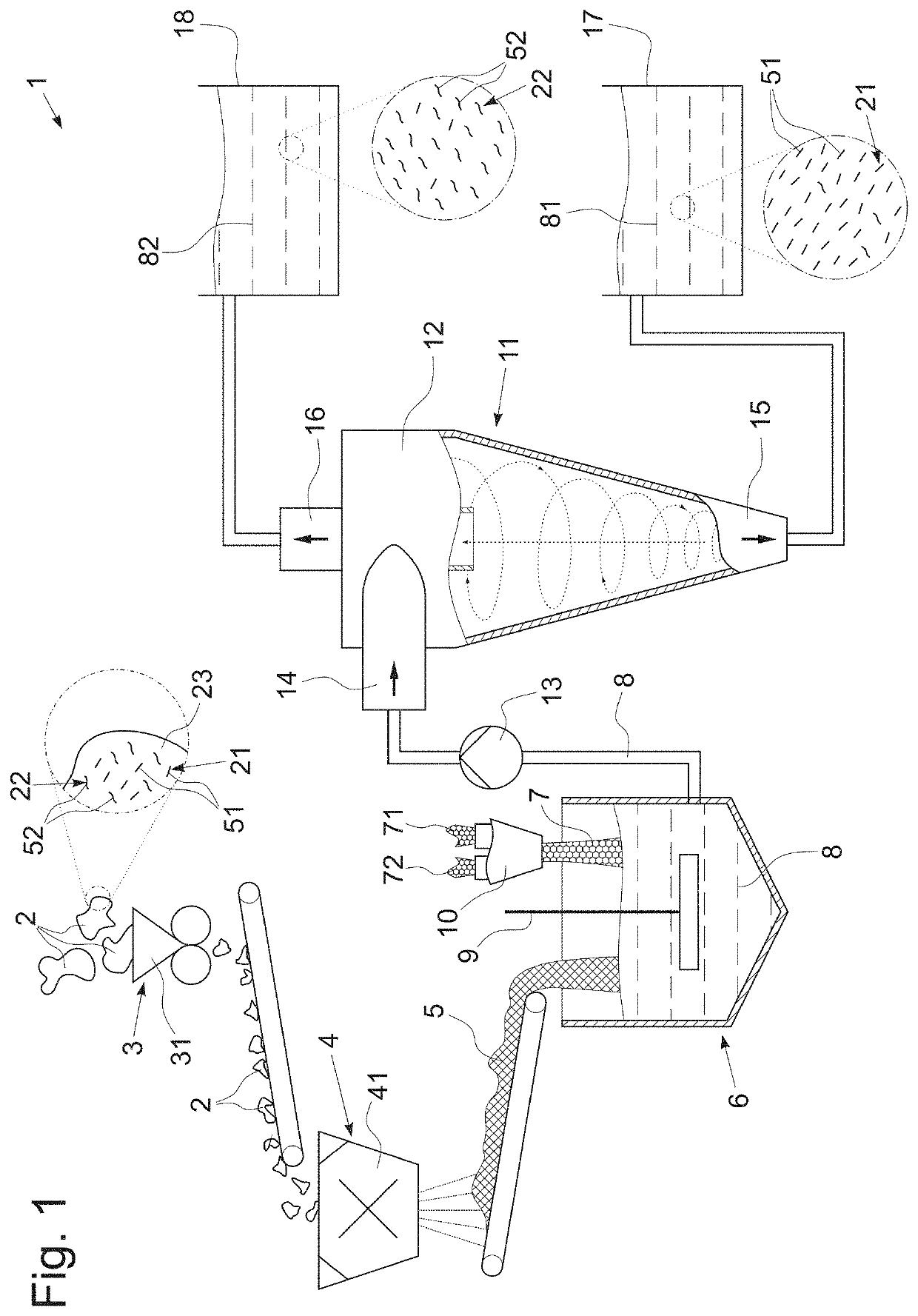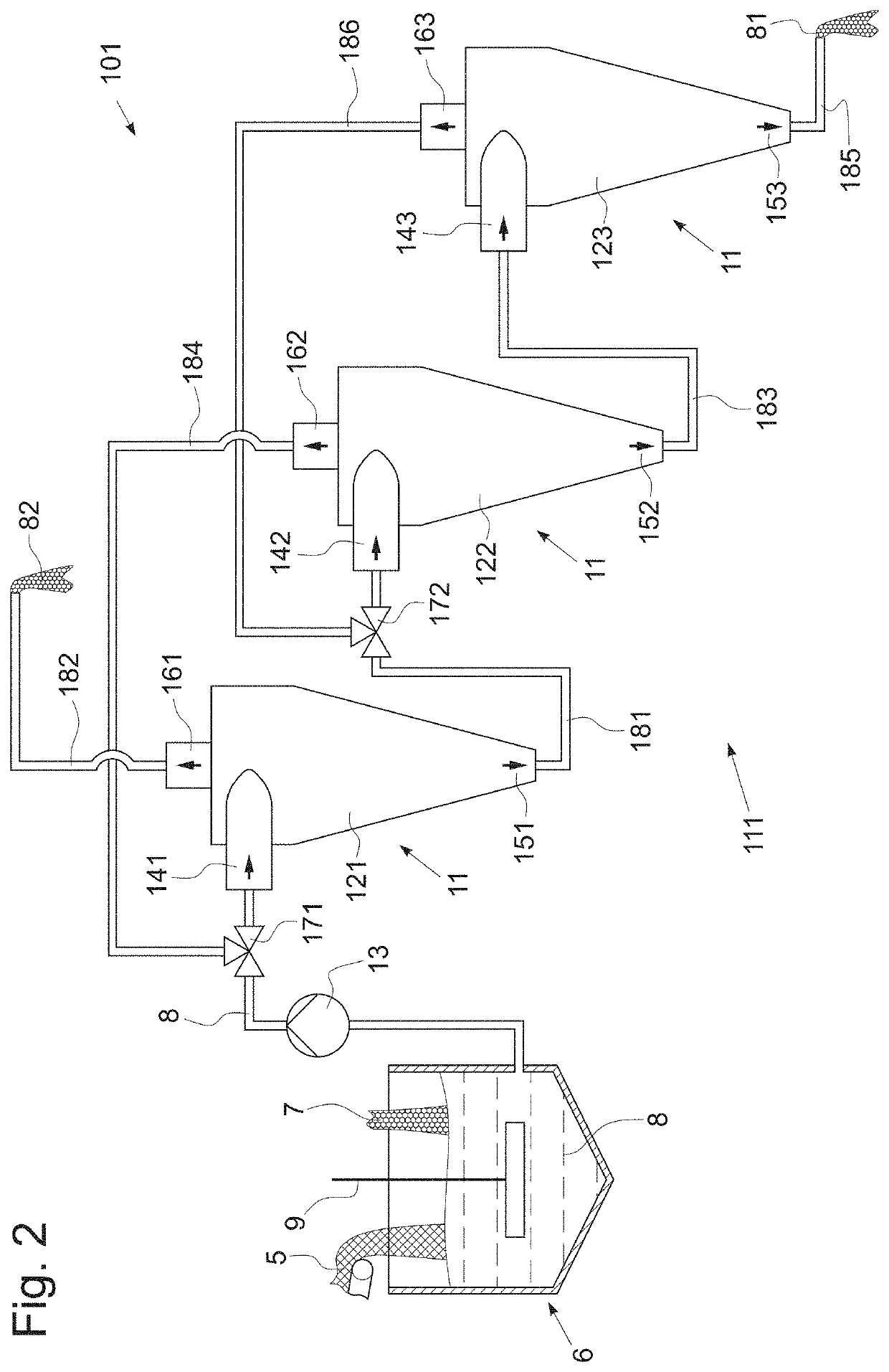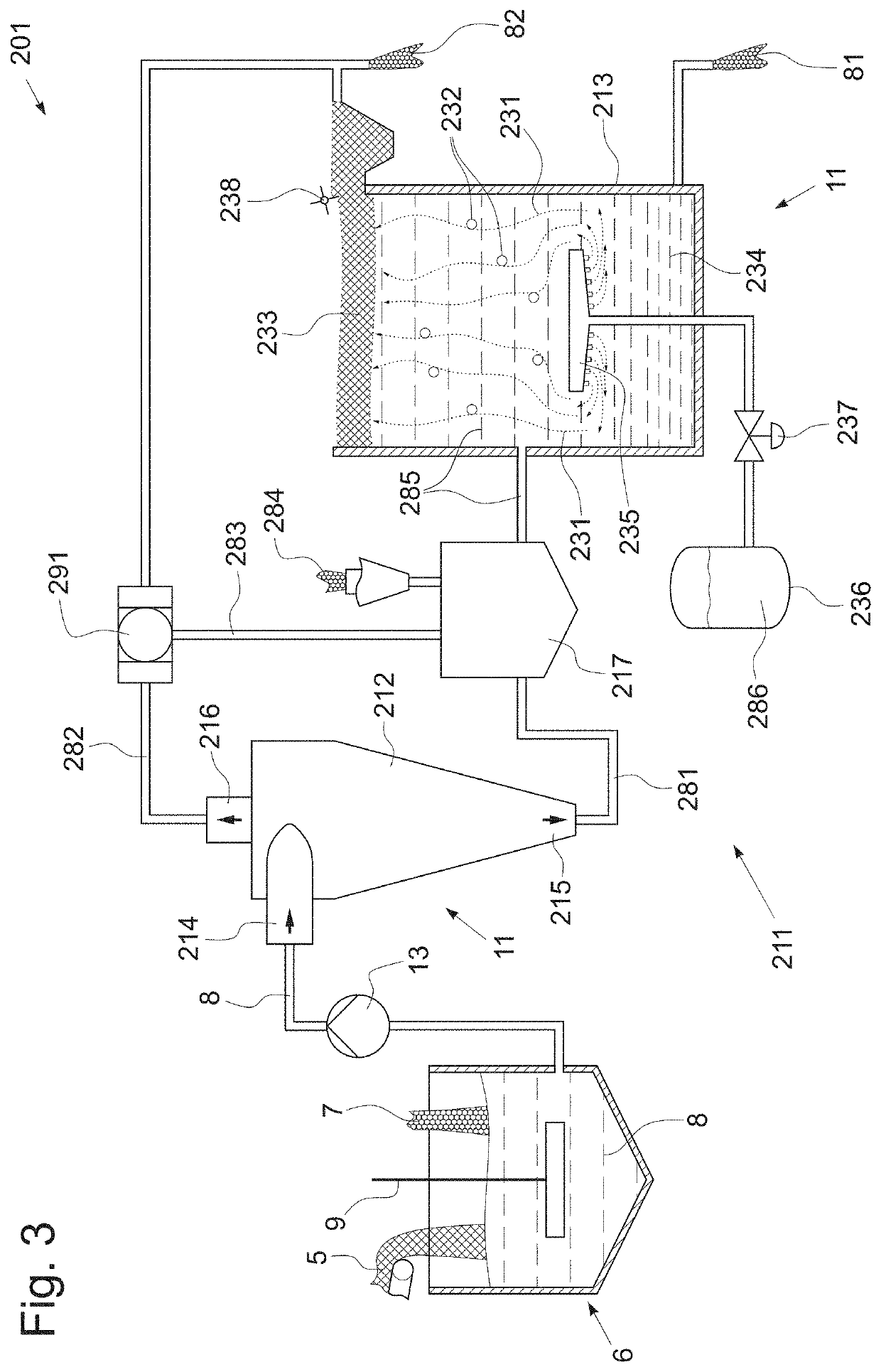A process for separating a fibrous target component from textile waste
- Summary
- Abstract
- Description
- Claims
- Application Information
AI Technical Summary
Benefits of technology
Problems solved by technology
Method used
Image
Examples
example 1
[0045]In example 1, according to the aforementioned procedure, 40 kg of textile waste (70% cotton and 30% PET content) were dispersed in 960 kg of alkaline aqueous solution and the resulting suspension was pumped to a single hydrocyclone (e.g. Radiclone BM80-1), i.e. the suspension contained 4% textile waste by weight and had a pH of 10, and the suspension was subsequently separated into a target fraction and a residual fraction. The target fraction was reclaimed from the underflow (bottom) outlet of the hydrocyclone, whereas the residual fraction was separated from the input stream via the overflow (top) outlet.
[0046]The following results could be obtained with this setup: after separation, the target fraction contained 19.4% of PET fibers by weight (of fibers) and 80.6% cotton fibers by weight (of fibers). The resulting target fraction thereby contained 3.9% fibers. 13.0% of the textile waste was rejected to the residual fraction and 3.5% of the initial cotton component was lost t...
example 2
[0047]In example 2, 40 kg of textile waste (70% cotton and 30% PET content) were dispersed in 960 kg alkaline aqueous solution (pH 10, 4% of textile waste by weight of fibers). Other than in example 1, the resulting suspension was pumped to a 5-stage hydrocyclone cascade (Radiclone BM80-1), whereby the underflow outlet of the first hydrocyclone stage was used as input for the second hydrocyclone stage, and so forth. The target fraction was reclaimed from the underflow outlet of the fifth hydrocyclone stage and the residual fraction was collected from the overflow outlets of all subsequent hydrocyclone stages.
[0048]The following results could be obtained with this setup: after separation, the target fraction contained 10.1% of PET fibers by weight and 89.9% cotton fibers by weight. The resulting target fraction thereby contained 3.6% fibers. 15.6% of the textile waste was rejected to the residual fraction and 3.1% of the initial cotton component was lost to the residual fraction. The...
example 3
[0049]In example 3, equally, 40 kg of textile waste (70% cotton and 30% PET content) were dispersed in 960 kg alkaline aqueous solution (pH 10, 4% of textile waste by weight). Therein, the resulting suspension was pumped to a 3-stage hydrocyclone cascade (Radiclone BM80-1), followed by a dissolved air flotation (DAF) treatment. Hence the suspension was supplied to the 3-stage hydrocyclone and the underflow outlet stream was subjected to the flotation. The target fraction thus was reclaimed from the flotation output (bottom sediment) and the residual fraction was collected from the overflow outlet of the hydrocyclone stage as well as from the reject (froth layer) of the flotation.
[0050]The following results could be obtained regarding example 3: after flotation, the target fraction contained 12.3% of PET fibers by weight and 87.7% cotton fibers by weight. The target fraction had a solid fiber content of 3.7%. In total, 14.9% of the textile waste was rejected to the residual fraction ...
PUM
| Property | Measurement | Unit |
|---|---|---|
| Temperature | aaaaa | aaaaa |
| Temperature | aaaaa | aaaaa |
| Temperature | aaaaa | aaaaa |
Abstract
Description
Claims
Application Information
 Login to View More
Login to View More - R&D
- Intellectual Property
- Life Sciences
- Materials
- Tech Scout
- Unparalleled Data Quality
- Higher Quality Content
- 60% Fewer Hallucinations
Browse by: Latest US Patents, China's latest patents, Technical Efficacy Thesaurus, Application Domain, Technology Topic, Popular Technical Reports.
© 2025 PatSnap. All rights reserved.Legal|Privacy policy|Modern Slavery Act Transparency Statement|Sitemap|About US| Contact US: help@patsnap.com



